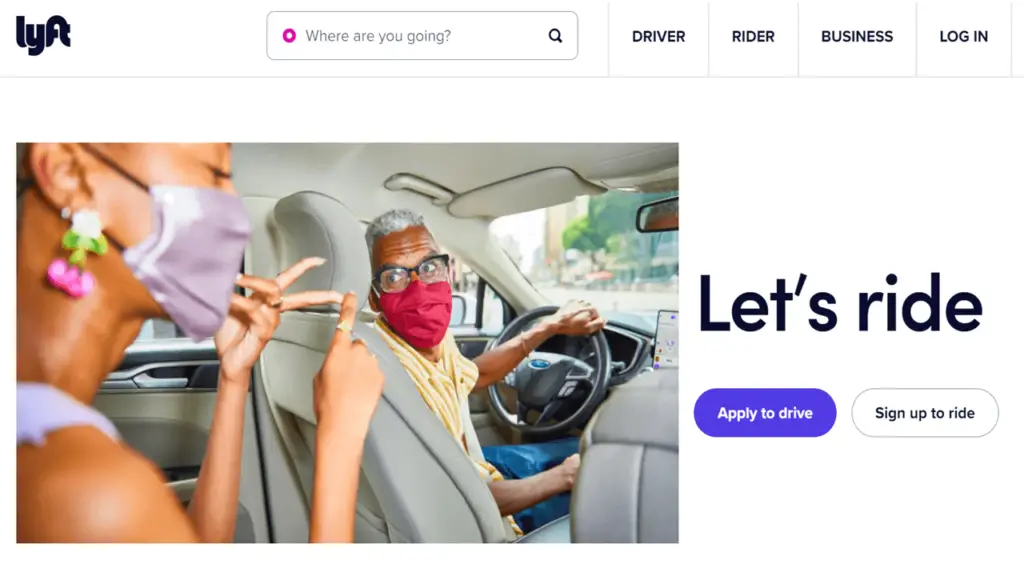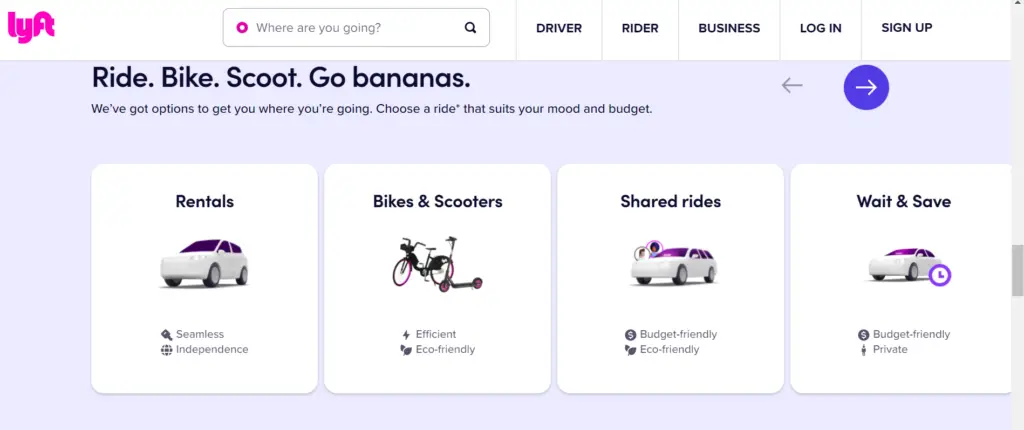
Lyft, Inc. is an American company that operates in the ride-hailing and vehicles for hire industry. However, that is just the tip of the iceberg for what is underneath the Lyft business model. The company is active in various markets apart from its primary ones. These include motorized scooters, bicycle-sharing systems, rental cars and food delivery. Similarly, the company has become one of the prominent names in the ride-hailing industry.
What is Lyft?
Lyft started its operations in 2012 under Logan Green and John Zimmer. At the time, Lyft was a service that operated under Zimride, a long-distance intercity carpooling company. The parent company started its operations in 2007 under the same founders. Due to the popularity of this service, the founders renamed their company Lyft in 2013. Currently, Lyft is the primary service and company that provides many services.
The first founder, Logan Green, graduated from the University of California with BA in Business Economics. At the time, he founded The Green Initiative Fund and was a board member for the Isla Vista Recreation and Park District. He was also the youngest director for the Santa Barbara Metropolitan Transit District. From 2007 to 2008, he served as the Sustainability Director at UCSB. In 2007, he also started Zimride with John Zimmer.
On the other hand, Zimmer graduated from Cornell University School of Hotel Administration. He was also a member of Sigma Pi Fraternity there. After graduation, Zimmer worked as an analyst in real estate finance at Lehman Brothers. However, they left the company before it went bankrupt. In 2007, he joined Logan Green in founding Zimride, which they later renamed Lyft.
Before they met, both founders started small car-sharing programs for their respective college campuses. Luckily, they met on Facebook through a mutual friend. It was when Zimmer was working at Lehman Brothers, and Green was still in college. Both founders brought significant experience from their respective work from their programs. This experience formed the base to founding Zimride and, subsequently, Lyft.
After founding Zimride, the company became the largest carpool company in the US. Although successful, its program Lyft became an even bigger success after its launch. In 2013, Lyft sold Zimride to Enterprise Holdings, the parent company of Enterprise Rent-A-Car. This transaction was a part of the founders’ strategy to focus on Lyft. Throughout the years, Lyft has become an even more prominent name. However, Zimride has not been as popular.
Over the years, Lyft has introduced various other services. Initially, it only offered ride-hailing and ride-sharing in the city. Since then, it has expanded its operations to other areas, like its primary competitor Uber. Similarly, Lyft has entered other markets aside from its primary US market. The company has become one of the most prominent names in the industry. However, it is struggling to turn its revenues into profits.
How does Lyft work?
Lyft works like other ride-sharing apps and allows users to order rides through its platform. It also includes other features, such as ride reservation, payment and communication with drivers. Primarily, Lyft works through its mobile apps. Therefore, users must download it on their smartphone platform to get started. The Lyft app is available on both iOS and Android platforms for free.
Once users download the Lyft app, they must sign up on the platform. This process is straightforward and does not take much time. However, it requires some basic information from the user. It includes the following items, although not limited to it:
- Full name
- Address
- Username
- Password
- Phone number
- Payment information
- Photo (optional)
The Lyft app supports various payment methods. These include debit and credit cards, PayPal, Apple Pay and Google Pay. Once users provide this information, they will receive a message on their phone to confirm their number. While mobile apps are the primary way to use Lyft, users can also access them through their computers. The process is similar, although the mobile apps are more optimized to serve users’ needs.
Once users have an account on Lyft, they can start requesting rides. Lyft will detect their current location automatically as soon as they open the app. Similarly, the app will show them the Lyft drivers available for rides in their general vicinity. Users can then type their destination, and the app will provide them with an estimate for the cost of their trip. Similarly, it offers various Lyft ride options depending on the city’s availability.

Once users choose their ride options, they can order a ride. The app coordinates the process between the driver and the user. Soon, their driver will arrive at their destination, and they can start the ride. The app also provides information during the ride. Once users reach their destination, the ride will end. The user can then rate their experience with the Lyft driver. Similarly, the app will also ask the driver for a rating for the user.
What is the Lyft business model?
Lyft’s business model is similar to Uber and other companies that provide various services. Essentially, Lyft uses its platform to connect several parties. This definition fits its business model with the C2C business model. Lyft connects consumers and customers through its platform. In this connection, Lyft acts as an intermediary and allows the parties to deal with each other.
Lyft’s business model resembles a cash machine business model. The company primarily relies on cash transactions between consumers and customers. Similarly, its primary product comes with a low-profit margin while requiring high activity levels. Usually, these features provide access to regular cash surplus, which the company uses to expand its operations.
More specifically, Lyft uses a ride-hailing and delivery business model. Within this model, the company allows customers to register on its platform. Consequently, it also brings consumers willing to pay for the services offered by those customers. Within ride-hailing, customers include drivers rendering services on the Lyft platform. Consumers consist of the users who order rides through the app.
For the delivery business, Lyft uses a similar business model. However, it also includes its partners, including restaurants and other similar services. The company also charges money from those businesses to provide access to users. Essentially, Lyft offers the platform for all the involved parties to benefit. In exchange, Lyft makes money from their interactions.
How does Lyft make money?
Before studying how Lyft makes money, it is crucial to understand its financial performance. The table below summarizes Lyft’s revenues, operating and net income between 2016 and 2020.
| Year (in millions) | Revenues | Operating income | Net Income |
| 2016 | $343 | ($693) | ($683) |
| 2017 | $1,060 | ($708) | ($688) |
| 2018 | $2,157 | ($978) | ($911) |
| 2019 | $3,616 | ($2,702) | ($2,602) |
| 2020 | $2,365 | ($1,808) | ($1,753) |
Lyft has experienced growing revenues, with a dip in the 2020 figures. This dip resulted from the COVID-19 pandemic, which affected the whole industry. Despite earning revenues in billions, Lyft has made operating and net losses over the years. However, it is not something specific to Lyft. Most companies in the ride-hailing and food delivery sector face similar issues.
Lyft’s revenues decreased by 34.6% in 2020. However, the reason behind this dip in performance is clear. These revenues decreased by $1.251 billion in that year. However, Lyft’s 2019 increased by 1.459 billion in 2019, equalling a 67.6% improvement. Despite that, the company did not experience better operating and net income.
Lyft makes money from several sources. The primary revenue streams for the company includes income from its ride-hailing service. While the company offers users to connect with riders, it does not hire drivers. Therefore, it may not collect money directly from users. Nonetheless, Lyft makes money every time a user uses its ride-hailing service. This money differs based on the time and distance of the ride.
Lyft also makes money from its secondary activities. These include food delivery and similar services. On top of that, Lyft also generates more revenues in peak hours. This feature allows the company to make more money when the demand is high. However, the peak hour revenues come during specific times. Lyft also offers a subscription service through which it makes money.
Conclusion
Lyft is a well-known name in the ride-hailing industry, competing with Uber. Initially, it started as a program under Zimride. Later, however, it gained attention and became more prevalent than its parent company. Lyft uses a similar business model as other ride-hailing companies. Similarly, the company makes money from the services offered through its platform.

